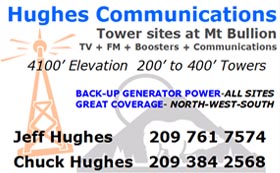FCC releases Fifth R&O EB Docket 04-296
On January 10, 2012, the FCC released its Fifth Report and Order on EB Docket 04-296 regarding the Emergency Alert System. The report implements CAP into the EAS rules and revises the Part 11 Rules.
Gary Timm, member of the SBE and consultant for Touchstone Consulting Group, published a list of highlights from the order in the Touchstone website newsletter, AWARE. They are reprinted here, with permission.
- Amends section 11.55 of the Commission’s rules to eliminate the requirement that EAS Participants receive and transmit CAP-formatted messages initiated by state governors.
- EAS Participants are permitted to use intermediary devices to meet their CAP-related obligations, provided that all intermediary devices must provide that capability of utilizing the enhanced text in a CAP message to meet the visual display requirements in section 11.51(d), (g)(3), (h)(3), and (j)(2) of the Commission’s rules, as set forth in section 3.6 of the ECIG Implementation Guide, by June 30, 2015.
- The EAS CAP Industry Group (ECIG) Implementation Guide (I.G.) is accepted as the method to convert CAP-formatted messages into legacy EAS format, and incorporates the ECIG I.G. into the Commission’s existing certification scheme.
- EAS Participants are required to monitor FEMA’s Integrated Public Alert and Warning System (IPAWS) for federal CAP-formatted alert messages.
- Further on the IPAWS monitoring requirement, the R&O clarifies that it would be inappropriate to adopt any form of blanket exemption from the basic obligations of monitoring for, receiving, and processing CAP-formatted messages, but concludes that the physical unavailability of broadband Internet service offers a presumption in favor of a waiver.
- The Non-Participating National (NN) EAS Station Designation is eliminated.
- Action is deferred on revising the EAS Operating Handbook until after results of the November 9, 2011 Nationwide EAS Test are analyzed.
- Revises section 11.32(a)(9)(iv) of the Commission’s rules to limit the duration of the Attention Signal to no more than eight seconds.
Click here for the complete EB 04-296 R&O at the SBE website


